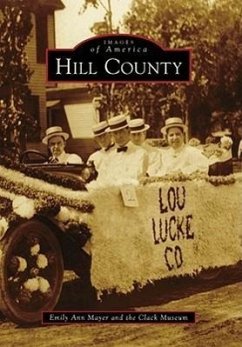With the establishment of Fort Assinniboine in Montana Territory in 1879, the development of Hill County has progressed from the wild frontier to modern communities without losing the true Western spirit. The arrival of the St. Paul, Manitoba, and Minneapolis Railroad, the precursor to the Great Northern Railroad, coupled with the Homestead Act, brought many settlers to the area. With their determination and talents, Hill County was carved in 1912 from Chouteau County and has seen both good times and bad. When Prohibition was passed, Hill County's proximity to Canada allowed for the booze to flow. Some made their fortunes in illegal trade, such as Christopher "Shorty" Young. Others chose a different route, becoming merchants, delving in agricultural related fields, or working on the railroad.
Hinweis: Dieser Artikel kann nur an eine deutsche Lieferadresse ausgeliefert werden.
Hinweis: Dieser Artikel kann nur an eine deutsche Lieferadresse ausgeliefert werden.








